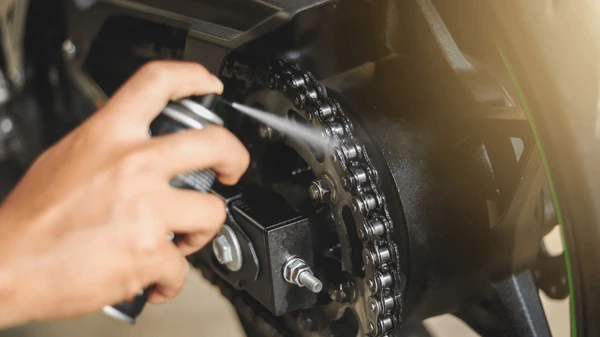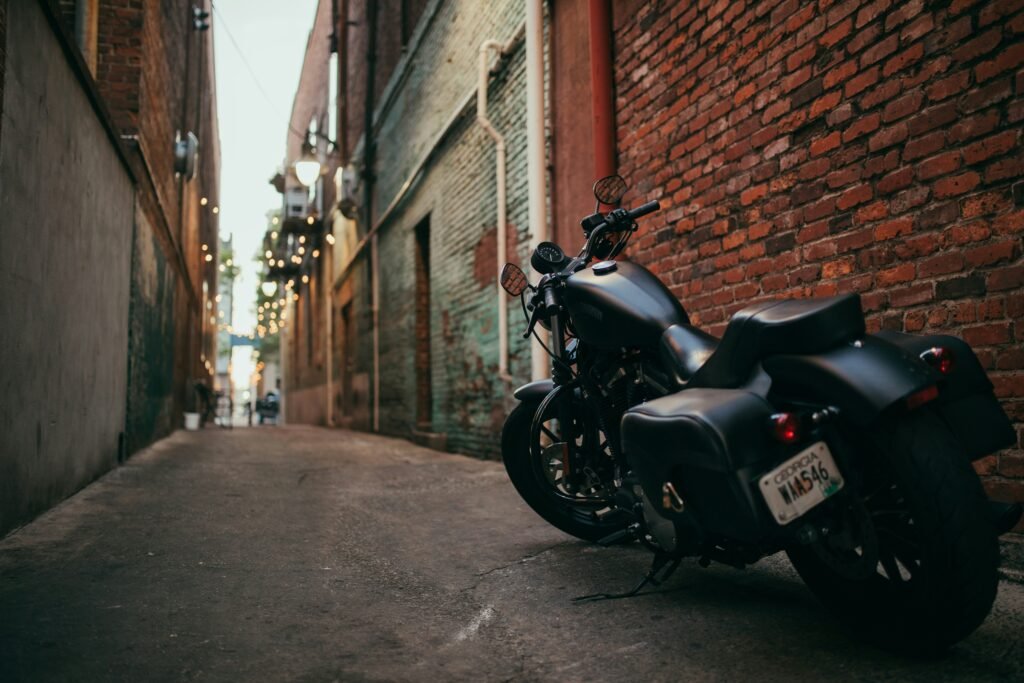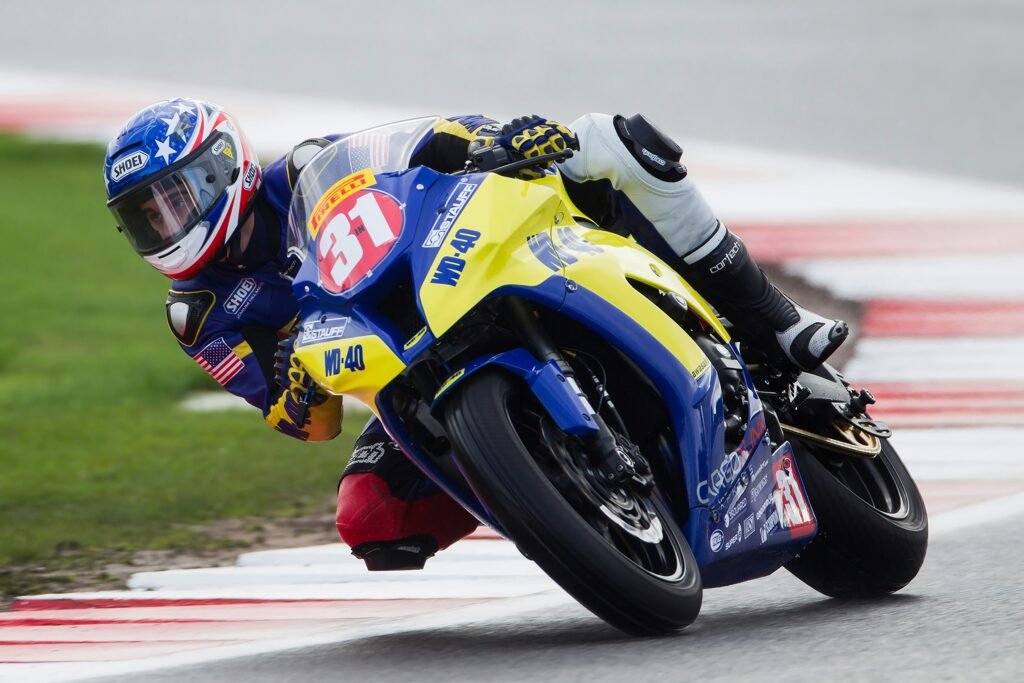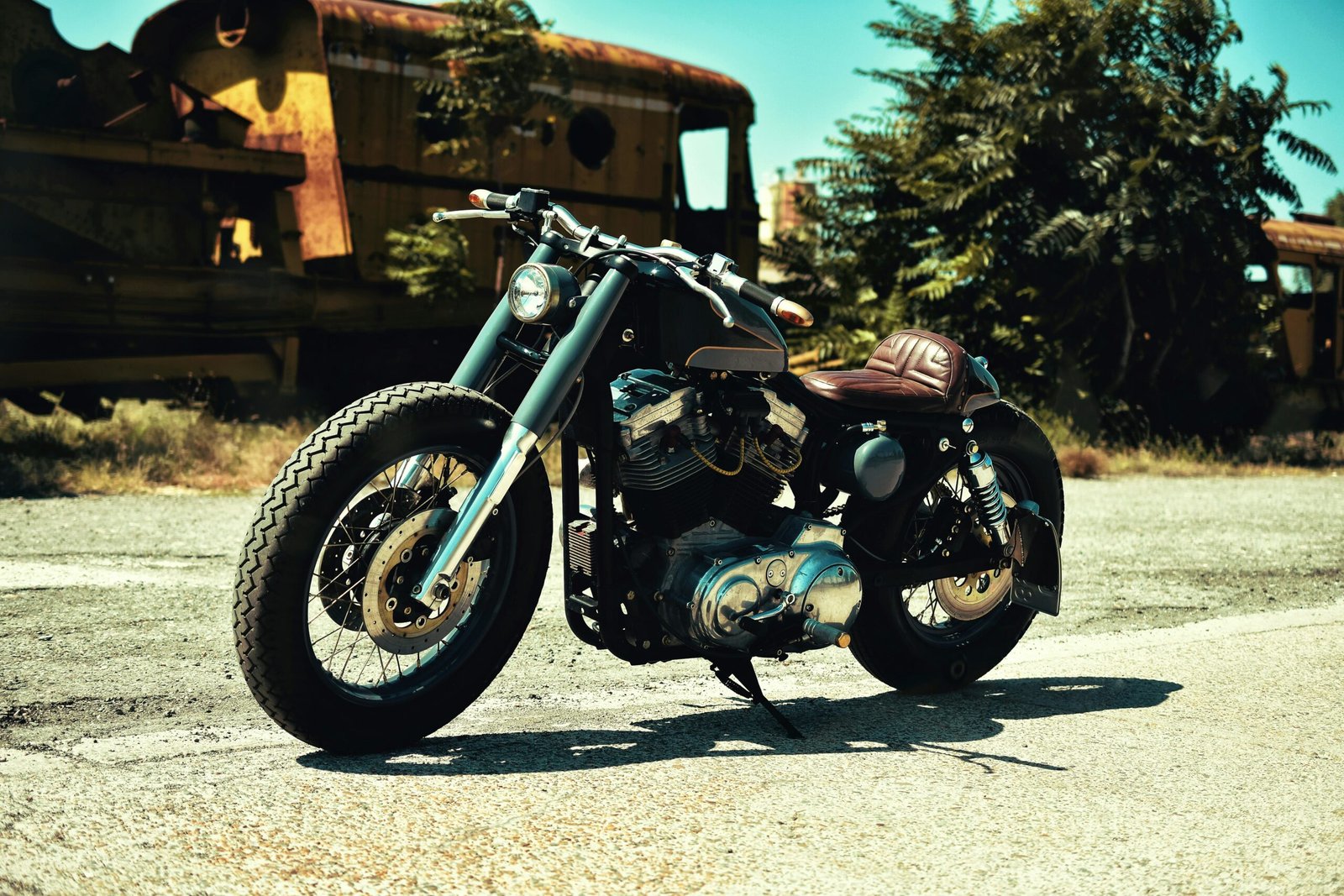If you are a rider you must know how to protect your motorcycle. For the most part, modern motorcycles are pretty well-built machines that can withstand most of the abuse.if you protect your motorcycle you must avoid some habits that are slowly killing your motorcycle. You must take care of your motorcycle.
And how to solve those bad habits and better the riding experience form your motorcycle.
Today, i’ll be talking about some 7 bad habit that slowly killid your motorcycle,and why you slove those,and how to sove those bad habit ,and other important ditile you need to know. So , let’s get started!
Using wide open throttle when the engine is still cold.
One of the biggest things you should avoid doing on any motorcycle is using a wide-open throttle when the engine is still cold. I know it’s hard to resist smacking the throttle open the minute you pull out of your driveway, but using modest throttle inputs while your bike is still getting up to operating temperature is always a smart decision.
There are multiple reasons to be conservative with your throttle during the beginning of your ride. When an engine is cold, the oil is cold as well. When the oil is cold, it is thicker and slower to move around and lubricate the critical components of your engine like your pistons, bearings, and camshafts.
If your oil is cold and thick, it won’t be able to effectively lubricate these areas. When you’re using wide open throttle, it puts a lot of stress on the engine components and adequate lubrication is a must. So, an engine needs to be properly up before experiencing heavy loads because the metal needs time to be warm and expand
If anengine experiences a lot of stress from excessive throttle input before the metal components have had time to expand and seal properly, you can risk damaging parts like the cylinder head or valves. Heavy throttle and high RPM on a cold engine can risk warping or even cracking different metal components. With the high combustion pressure an engine experiences during wide open throttle, engine parts need to be both thermally expanded to be adequately lubricated.
If your engine is cold, your tires are also likely cold too, so heavy throttle on cold That might not be mechanically detrimental but it’s certainly something to consider if you low side your baby pulling out of the driveway. You always give your bike 10 to 15 seconds to warm up your motorcycle.
Neglecting Maintenance

When you are going on a long ride, always ensure proper maintenance of your bike both before and after the trip. Neglecting regular maintenance is one of the quickest ways to cause serious damage to your motorcycle. Maintenance isn’t just about oil changes; it involves keeping track of the health of critical systems like the engine, transmission, brakes, and suspension. Failing to check and replace worn-out components, such as brake pads, tires, or fluids, can lead to major issues down the line, sometimes resulting in expensive repairs.
I will share some basic maintenance tips for the best riding experience.
Daily/Pre-Ride Checks
- Tires
- Inspect tire pressure using a gauge and adjust it to the manufacturer’s recommended levels.
- Check for visible damage, cracks, or uneven wear.
- Lights
- Ensure headlights, brake lights, and turn signals are functioning correctly.
- Brakes
- Check for adequate brake fluid levels and test for proper braking response.
- Chain/Belt
- Inspect the chain or belt for proper tension and lubrication (for chains). Adjust or lube as needed.
- Oil Level
- Check the oil level with the dipstick or sight glass. Top it up if needed.
- Leaks
- Look for any oil, coolant, or brake fluid leaks under the bike.
- Controls
- Test throttle, clutch, and brake levers for smooth operation.
Weekly Maintenance
- Battery
- Check connections for corrosion and ensure it’s securely mounted.
- Test the charge with a multimeter (should read ~12.6V for a fully charged battery).
- Coolant
- Inspect coolant levels and top off if needed.
- Bolts and Fasteners
- Tighten any loose bolts or fasteners, especially on the exhaust, handlebars, and footpegs.
- Air Filter
- Check for dust or debris and clean/replace if dirty.
Monthly Maintenance
- Engine Oil & Filter
- Replace oil and filter as per your bike’s service manual or every 3,000-6,000 km (or 2,000-4,000 miles).
- Drive System
- Clean and lubricate the chain thoroughly. Inspect sprockets for wear.
- Suspension
- Check for leaks in the fork seals and test rear suspension performance. Adjust sag if needed.
- Tires
- Inspect for deeper wear or embedded objects and rotate tires if necessary.
Seasonal Maintenance
- Spark Plugs
- Inspect and replace if fouled or worn out.
- Brake Pads & Fluid
- Check pad thickness and replace if less than 3mm.
- Flush and replace brake fluid every 1-2 years.
- Clutch Cable/Fluid
- Lubricate the clutch cable or replace hydraulic fluid if the clutch feels soft.
- Fuel System
- Add a fuel stabilizer if storing for long periods. Clean injectors or carburetor if performance drops.
- Cooling System
- Flush and replace coolant every two years.
- Frame and Body
- Clean the bike thoroughly and check for rust or cracks in the frame.
Riding with a Dirty Air Filter

Every biker should understand the importance of the air filter in a motorcycle. The air filter ensures your motorcycle receives fresh air to burn fuel efficiently, delivering the best performance.
Before every long ride, you should inspect your air filter to check its condition and clean it if necessary. The air filter in your motorcycle plays a crucial role in ensuring clean air enters the engine. When the air filter becomes clogged with dirt, debris, and dust, it restricts airflow, causing the engine to run less efficiently. This can decrease engine performance, lower fuel efficiency, and even lead to engine misfires or stalling. Over time, it can also damage sensitive components like spark plugs and the fuel injection system.
A dirty air filter increases the risk of contaminants entering the engine, potentially resulting in costly repairs. To avoid these issues, check and clean the air filter regularly and replace it as needed.
When you change your engine oil, it’s an excellent opportunity to check your air filter. Inspect it carefully and clean it using a high-pressure air pump. Be cautious not to damage the air filter during the cleaning process—handle it with care.
Inconsistent Fuel Quality
During long rides, you often refill your motorcycle at various fuel pumps, which increases the risk of compromising fuel quality. Poor fuel quality can have a negative impact on your motorcycle’s performance and, over time, may lead to significant engine problems.
Fuel quality is a critical factor in maintaining the health of your motorcycle’s engine. Poor-quality fuel, or fuel that has been sitting in the tank for too long, can cause issues such as engine knocking, poor acceleration, and reduced fuel efficiency. Old or contaminated fuel can clog the fuel system, potentially leading to problems like fuel injector failure or a gummed-up carburetor.
To keep your engine running smoothly, always use high-quality fuel from reputable sources. If your motorcycle has been sitting idle for an extended period, consider draining the fuel tank and refilling it with fresh fuel before starting it again.
How to solve this issue now talk about that Stick to reputable fuel stations that are known for consistent quality. Avoid roadside fuel vendors or stations with a reputation for adulterated fuel. If your motorcycle’s manufacturer recommends higher-octane fuel, use it to prevent knocking or pre-ignition issues. Be mindful that not all motorcycles require premium fuel—check your owner’s manual.
If your motorcycle doesn’t already have a fuel filter, consider installing one. A high-quality inline fuel filter can help remove contaminants before they reach the engine. Use fuel additives or cleaners that stabilize fuel and remove impurities. Look for additives designed to combat moisture, clean injectors, or enhance octane levels.
Over time, debris or water can accumulate in the fuel tank, especially if low-quality fuel is used. Periodically drain and clean the tank to maintain performance. Regularly check and clean the carburetor or fuel injectors. Inspect fuel lines for signs of wear, cracking, or blockage.
Fuel formulations can change with the seasons, particularly in regions with extreme weather. Ensure your motorcycle is ready for these changes by checking for regional fuel adjustments. When traveling to remote areas where fuel quality might be questionable, carry an octane booster. This is especially useful for motorcycles requiring high-octane fuel.
Fuel can degrade over time, particularly if the bike is left unused for weeks or months. Modern motorcycles equipped with electronic fuel injection (EFI) can often adapt better to varying fuel quality. If possible, upgrade from a carburetor system to EFI for more consistent performance.
Leaving your bike parked outside uncovered

Leaving your bike parked outside uncovered is another way you can cause damage over the long term. The sun is one of the most powerful forces in the universe. It is the source of energy for all organic life on Earth, basically. It’s also responsible for unrelenting, irreversible destruction to countless motorcycles around the world and to a lot of other stuff.
Long-term UV exposure can, of course, damage your bike’s paint but can also lead to early wear of soft components like rubber hoses and seals. UV light can also damage your tires over time as the material breaks down more quickly.
Long-term exposure to rain can also damage your bike. Excessive water can make its way into electrical components, and as bikes become more and more tech-heavy, they can be even more susceptible to electronic gremlins. Preventing this to the best of your ability is critical. Long-term exposure to moisture can lead to rust buildup on metal components like your chain, sprocket, and brake rotors.
Moisture, man, it really just causes things to seize and makes future maintenance a much greater pain. Long-term temperature fluctuations can also wear out everything and destroy everything. Rust on certain fasteners can also damage different parts of your bike. If your bike lives outside year-round, big changes between very cold and very warm temperatures can weaken seals and gaskets over time, leading to annoying fluid leaks. These temperature changes can also lead to condensation in your gas tank, which can create rust and fuel degradation, causing gunk that can jam up your system.
Not to mention, a motorcycle that spends most of its time stored unprotected outside can end up being damaged by animals. So always protect your motorcycle and cover it very well.
dragging the rear brake excessively

Another bad habit new riders have is dragging the rear brake excessively. This can be caused by a couple of reasons. A lot of new riders are nervous, and they aren’t completely aware of what they’re doing or how they’re doing it while riding. Having spent a lot of time practicing low-speed maneuvers, where dragging the rear brake is encouraged, they may unknowingly carry that habit into riding at higher speeds.
A newer rider might also unknowingly drag the brake due to poor positioning of their feet. Instead of having the balls of their feet on the pegs, they might rest the center of their foot on the pegs, which puts their toe directly over the rear brake lever. This can result in accidental actuation of the brake pedal.
Accidentally dragging the rear brake for an extended period can overheat your braking components, potentially warping the rotor, glazing the pads, and overheating the brake fluid, which can lead to brake fade.
Even if you don’t cause long-term damage to your braking components that would necessitate immediate replacement, misusing or dragging your rear brake can lead to excessive and premature wear on your pads and rotors. You’ll also be robbing your bike of speed and power, forcing your engine to work harder than it needs to, which, at the very least, can cause your bike to consume more fuel.
I’ve also seen cases on the track where riders think their bike isn’t accelerating as hard or is behaving strangely mid-corner, only to find out that the rear brake was dragging the entire time they were out there. So, yeah, make sure you’re not dragging your rear brake and that your components are working properly.
In general, poor riding techniques can cause damage to your bike over time in a multitude of ways. Super-aggressive and routinely harsh or abrupt throttle inputs can add excessive wear on your chain, sprockets, and even your tires. Similarly, regular aggressive braking will also put excessive wear on your braking components and tires. You really should only be braking aggressively on the track. There’s no need to do it on the street unless it’s an emergency.
Improper tie down technique

If you’re routinely trailering your bike to track days or canyon squid meetups, it’s important to make sure you have good tie-down
technique to avoid damaging your bike. I’ve seen lots of horror stories of people having their bikes towed by a flatbed after a breakdown or flat tire. Because the tow truck driver has limited experience towing bikes, they tie them down in the worst possible way, causing damage.
Bikes are much smaller and less robust than cars, so you can’t just ratchet them down any which way and assume it’s going to be fine. Improperly tying a motorcycle down in a truck bed or trailer can damage your suspension. If you compress your forks too much and the bike is exposed to force as the truck or trailer moves over bumps in the road, it can blow out your seals. If your bike is overly ratcheted down in the wrong place, not allowing the suspension to effectively disperse the force of the road, it can pull your bike out of alignment or even create stress cracks in your subframe. I’ve seen it happen before.
I’ve even seen it happen where somebody ties down their motorcycle at the handlebars but uses the plastic parts of the handlebar clusters. Then, all of a sudden, the little notch pops out from the handlebar, and you have electronic components rattling around. It’s not a good thing.
If a bike is tied down on the side stand, which is ill-advised by most experienced riders, it can put excessive strain on the stand and cause it to break or damage the part that connects it to the frame. If your bike is tied down while on the side stand and the stand itself breaks, the bike will fall and cause even more damage. Strapping your bike down in the wrong places can also damage your paint, which may not be the worst-case mechanical scenario, but it’s something we all want to avoid.
When trailering a motorcycle, it should be tied down while upright, not on the side stand. Using a wheel chock is the easiest way to achieve this. The bike should be strapped down with the suspension compressed but not bottomed out.

